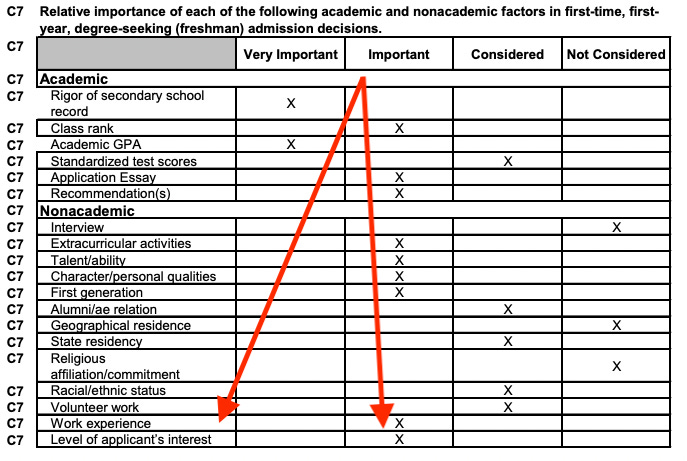How Not to Waste Thousands of Dollars Taking Your Teenager On a College Visit and Making Your Tour a Memorable One | 3 Simple Ways to Keep Your Child Engaged on a Campus Visit

You want to take your child on a college tour and see if the campus you're visiting is a good fit. But you don't want to go on a tour if your child isn't interested or engaged, potentially wasting thousands of dollars. Don't take that risk.
Do these 3 things to make the tour a memorable one.
Soothing An Angsty Teen
Taking an anxious teenager on a college tour is not for the faint of heart. Teenagers are wonderful creatures, full of energy and emotion, but also a cauldron of hormones that can turn on you without warning.
To get the most out of a campus visit and not have any disagreements, you need to give them an equal say in organizing the tour.
After all, it's their future.
Understanding Your Opponent
You love your child dearly and want the best for them, but you do not understand their compulsion to constantly have their phone in their hands as life passes them by. If you have ever had to repeatedly tell your child to put their phone down and even threaten to take it away, then you are a Native Analog trying to change the behavior of a Native Digital.
Good luck with that!?
Native Analogs vs. Native Digitals
The chronic need to engage with an electronic device plagues the school-age generation (and most likely all future generations). These children were born into a time when technology was integrated into their lives.
For those older than 35, technology is just an add-on. We can do so much with our phones, yet we live an analog life while our children live a digital life.
This difference between analog and digital has created a new category of people called Native Digitals (those under 35). Those of us who grew up with the additional technology (all over 35) are called Native Analogs.
There are some critical differences between "us" and "them."
Native Analogs:
-
buy things online (i.e., Amazon & Apple Products)
-
use technology as an aid or distraction (Facebook, Twitter, and evenTikTok)
Native Digitals:
-
buy online things (i.e., video game enhancements & digital subscriptions for premium services)
-
use real life as a distraction from their digital lives
Native Analogs buy physical objects to improve their daily lives.
Native Digitals buy digital products and services to improve their digital lives.
In case you are not yet clear on the difference: A Native Analog goes to an amusement park and enjoys the rides and all the park has to offer.

A Native Digital takes pictures of the rides (regardless of whether they went on them or not), the food they eat, and the characters they pose with, uses filters to enhance and alter every photo, searches for appropriate memes, tags everyone and everything, and posts them all to social media, usually on more than one account.
At the end of the day, as you are leaving the park, Native Analogs reminisce about how much fun they just had while Native Digitals search for likes and comments on their posts.
Both Analogs and Digitals live the life they grew up in. One way is neither better nor worse, just different.
So if you want your college tour to go smoothly, you need to adapt to their way of life.
For more information on the Native Digital vs. Native Analog concept,
read Category Pirates "A New Category of Human."
How To Adapt to Your Digital Child's Needs
This generation has been rewired to look inward rather than outward (the Zoom School year permanently changed their mentality). So their reality exists in a virtual world, and they are happy to live there.
This generation is also one that is desperate to be heard and included in decisions. Whether or not you believe they have earned that right is irrelevant. They think they have earned the right to shape their future, and you must take that into account.
Step #1 - The Jedi Mind Trick - How to Use the Illusion of Choice to Your Advantage
Parents make the mistake of asking their children yes or no questions and then getting angry if they answer no. Instead of giving them a chance to say no, parents should provide them with a choice.
For example, if you ask your child if they want to go on a college tour, you may get back a firm 'No." Now you have to fight to get a "yes." So much emotional capital is spent on overcoming this.
Instead, ask if they would go to Disneyland for a day and then see UCLA and USC or if they would rather vacation on the beaches of San Diego and see UC San Diego and San Diego State afterward.
They will be distracted by the shiny object you are putting in front of them (Disney or Sun & Fun), and the likelihood of a positive answer increases dramatically.
I call this the Jedi mind trick, and it's worked for decades with kids (and some adults). When you give kids a choice (that you have predetermined), they are much less likely to resist.
Step #2 - Plan on Negotiating and Losing (well, sorta)
Our children believe they should have an equal say (in everything!). If you present a plan, they'll most likely try to negotiate it (they may even suggest outlandish things to push their limits - a teenager's job!).
Don't take the bait.
As in the previous example, they might tell you they don't want to attend California school. No problem, because there are 49 other states. Ask them to submit a plan where you go to an area with a few colleges nearby.
This could be Oregon, Washington, Arizona, New York, or even Boston.
The Boston area, for example, has over 40 colleges! Spend a few days in Boston, and you can see:
-
Boston College
-
Boston University
-
Brandeis University
-
Harvard University
-
MIT
-
Northeastern University
-
Tufts
-
University of Massachusetts system
-
and many more.
One of the key points to remember is that you need to distract them with the shiny object when you make the plan. But when they make the plan, they have already incorporated the shiny object into the equation. They might be happy just walking in Times Square for an evening to say there were there (and post on social, of course).
Remember, your goal was to get them to go on a college visit, and you got them to agree. That is your first win; you can build on that from there.
If you can't agree on one location, then compromise on multiple trips, where you both have a say in either the shiny object/attraction (e.g., Disneyland or Redsox game) or the colleges and city tour.
Step #3 - Embrace Their Digital Ways on the Tour
You are on the tour, and your kids are bored, playing on their cell phones, and you feel like you have wasted time and money.
Do not give up!
Accept your kids' digital behavior and let them use technology to guide the tour.
Most colleges offer interactive apps that are great for college tours. Maps, pictures, interesting facts, and guided tours are just some things you can find in these apps.
*Pro-tip: Register your child's name on the app so the admissions office can recognize them as having an increased "level of applicant's interest."
This chart from the University of Massachusetts Common Data Set shows that a student's "level of applicant interest" is an important aspect of the college selection process. With Big Brother, I mean Big Data, colleges can track just about anything. **
Embrace Their Behavior
Encourage your child to take photos and selfies during the tour. Let your child post on social media. They can tag it and see who else is there or who has been there. Have them scan the app and search the college's website for cool things to do and see.
Let them find out what famous people have studied at that school or what inventions the school is known for. Ask them to find the best place for dessert and if the kids will enjoy any cool attractions or social aspects.
Tell them to take out their phone and look up various facts when things bog down.
Use the following websites to search for:
Collegeresults.org to Check:
-
Average GPA
-
First-year retention rates - beware of any school with 85% or below
-
4 and 6-year grad rates - the national average for 4-year grad rate is 41%
-
Transfer-out Rates - aim for something below 10%
-
75th percentile ACT and/or SAT scores (75th percentile is a better number to use to see if the student is a good match)

Niche.com to Check
-
Overall Grade
-
Academics Grade
-
Campus Grade
-
Dorms and Food Grade
-
Party Scene (hey, it's going to happen)
*Niche.com is like the Yelp of colleges, with all the data being user-generated.*

Engeniuslearning.com to See Future Outcomes for All Colleges and Majors:
-
5-Year Grad Rate - look for schools above 70%
-
10 Years or Fewer for a Positive ROI - any school with a longer ROI might not be a good investment
-
20 Year Estimated Earnings
-
Lifetime Return on Investment

Remember, these children may be insecure and afraid to embrace their future. They may not know what they want and may not be ready to tell you what college they want to attend. However, your goal with any college visit is to collect data points.
At the end of each visit, ask them:
-
What did you like?
-
What did you not like?
-
What did you think about the campus? Too big, too small, or just right?
-
Did you feel like you could fit in?
-
If you could change to this school, what would it be?
-
Is there anything about this school that you really disliked and would make it a deal-breaker?
**You may want to space these questions out. One of my sons hated any question, so getting this information could take an entire day. My other son will answer anything for 5 or 10 minutes, then we lose him. **
Although you may not be able to get them to take notes, I suggest you take notes. The more colleges you attend, the harder it will be to retain this information.
You can have a memorable trip and learn a lot about the colleges you visit if you choose to meet your teen in their world. They want to be heard, and they want to do things the way they see fit.
Stay connected with news and updates!
Join our mailing list to receive the latest news and updates from our team.
Don't worry, your information will not be shared.
We hate SPAM. We will never sell your information, for any reason.


